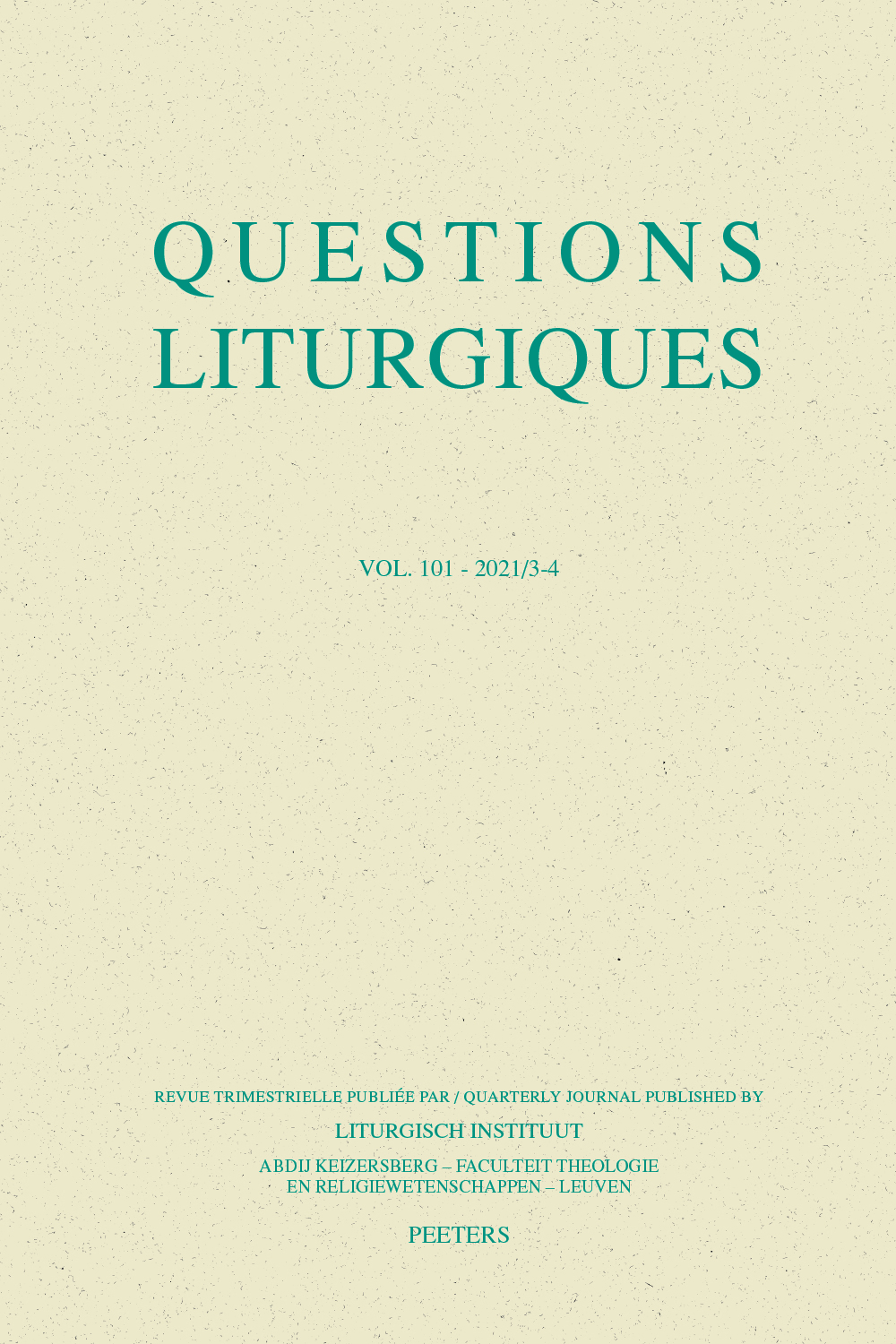 previous article in this issue previous article in this issue | next article in this issue  |

Preview first page |
Document Details : Title: Modèle de formation liturgique Author(s): CARDITA, Ângelo Journal: Questions Liturgiques/Studies in Liturgy Volume: 100 Issue: 1-2 Date: 2020 Pages: 161-188 DOI: 10.2143/QL.100.1.3287693 Abstract : Cette étude propose une vision d’ensemble des différents modèles de formation liturgique qui sont apparus dans le contexte du mouvement liturgique et de la réforme conciliaire. On fait la distinction entre deux grandes visées pédagogiques: former «au» rite et apprendre «avec» le rite. À la base de chacun des modèles de formation liturgique, il y a une de ces deux façons de considérer le rite. Le modèle «cérémoniel» et le modèle «cognitif» sont les deux configurations qu’assume la visée d’une formation au rite. À l’intérieur du modèle cognitif, il est possible de discerner trois variations qui mettent l’accent notamment sur la dimension affective, l’aspect sémantique et la possibilité d’une approche idéologique. Le rite comme source de connaissance inspire, en revanche, le modèle «intersubjectif». On soutient que celui-ci est le seul qui corresponde aux exigences de la liturgie à l’heure actuelle. Il est illustré ici par les perspectives de Romano Guardini (1885-1668), Hélène Lubienska de Lenval (1895-1972) et Andrea Grillo (1962-). This study offers an overview of the various models of liturgical formation that have emerged in the context of the liturgical movement and the conciliar reform. A distinction is made between two main educational aims: training 'to' the rite and learning 'with' the rite. At the root of each of the models of liturgical formation, there is one of these two ways of considering the rite. The 'ceremonial' model and the 'cognitive' model are the two configurations taken by the aim of the rite training. Within the cognitive model, it is possible to discern three variations which emphasize in particular the affective dimension, the semantic aspect and the possibility of an ideological approach. The rite as a source of knowledge, on the other hand, inspires the 'intersubjective' model. It is argued that this is the only model that meets the requirements of today’s liturgy. It is illustrated here by the perspectives of Romano Guardini (1885-1668), Hélène Lubienska de Lenval (1895-1972) and Andrea Grillo (1962-). |
|


